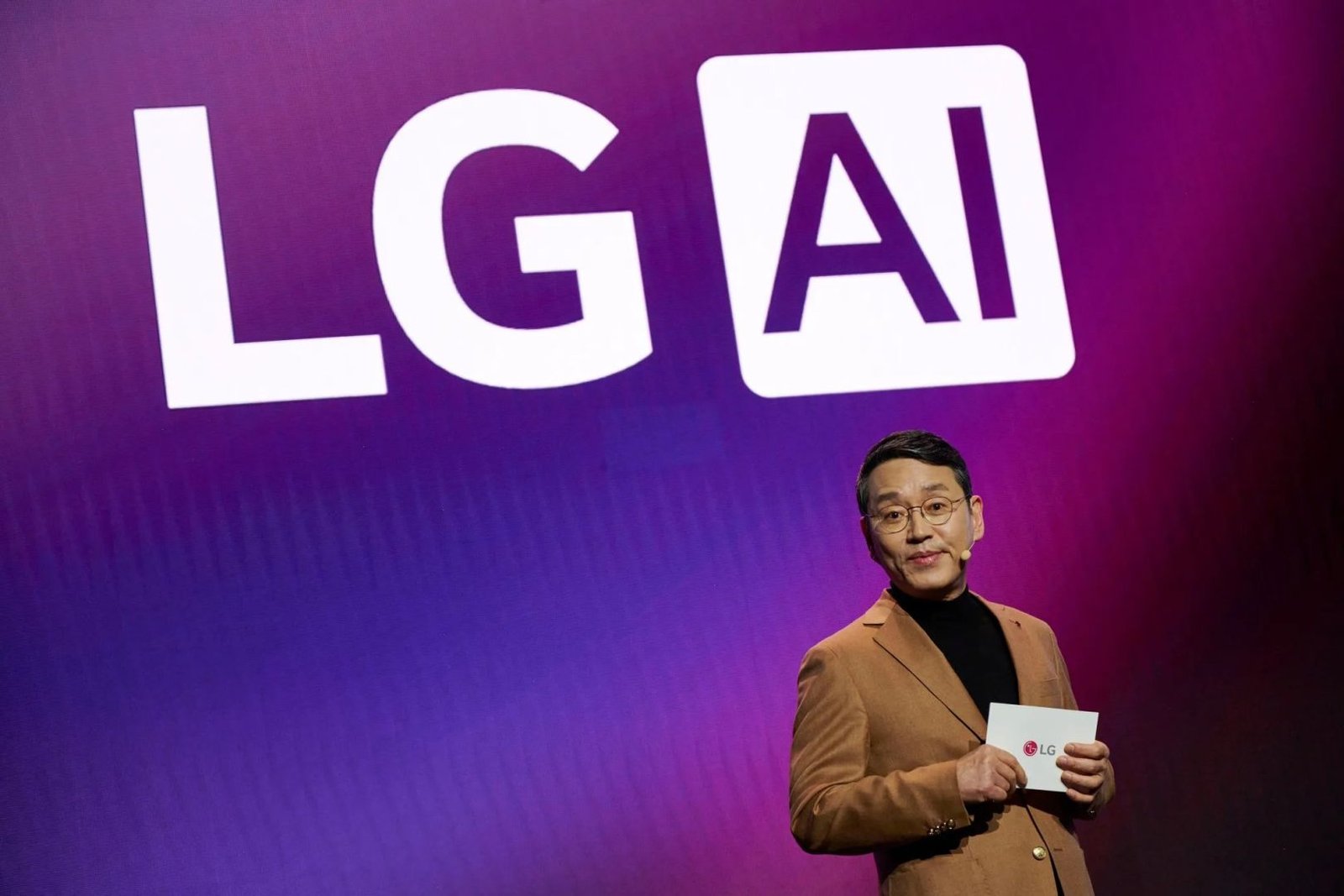AI Research
LG AI Research unveils Exaone Path 2.0 to enhance cancer diagnosis and treatment

By Alimat Aliyeva
On Wednesday, LG AI Research unveiled Exaone Path 2.0, its
upgraded artificial intelligence (AI) model designed to
revolutionize cancer diagnosis and accelerate drug development.
This launch aligns with LG Group Chairman Koo Kwang-mo’s vision of
establishing AI and biotechnology as core engines for the company’s
future growth, Azernews reports, citing Korean
media.
According to LG AI Research, Exaone Path 2.0 is trained on
significantly higher-quality data compared to its predecessor,
launched in August last year. The enhanced model can precisely
analyze and predict not only genetic mutations and expression
patterns but also detect subtle changes in human cells and tissues.
This advancement could enable earlier cancer detection, more
accurate disease progression forecasts, and support the development
of new drugs and personalized treatments.
A key breakthrough lies in the new technology that trains the AI
not just on small pathology image patches but also on whole-slide
imaging, pushing genetic mutation prediction accuracy to a
world-leading 78.4 percent.
LG AI Research expects this technology to secure the critical
“golden hour” for cancer patients by slashing gene test turnaround
times from over two weeks to under a minute. The institute also
introduced disease-specific AI models focused on lung and
colorectal cancers.
To strengthen this initiative, LG has partnered with Dr. Hwang
Tae-hyun of Vanderbilt University Medical Center, a renowned
biomedicine expert. Dr. Hwang, a prominent Korean scientist, leads
the U.S. government-supported “Cancer Moonshot” project aimed at
combating gastric cancer.
Together, LG AI Research and Dr. Hwang’s team plan to develop a
multimodal medical AI platform that integrates real clinical tissue
samples, pathology images, and treatment data from cancer patients
enrolled in clinical trials. They believe this collaboration will
usher in a new era of personalized, precision medicine.
This partnership also reflects Chairman Koo’s strategic push to
position AI and biotechnology as transformative technologies that
fundamentally improve people’s lives. LG AI Research and Dr.
Hwang’s team regard their platform as the world’s first attempt to
implement clinical AI at such a comprehensive level.
While oncology is the initial focus, the team plans to expand
the platform’s capabilities into other critical areas such as
transplant rejection, immunology, and diabetes research.
“Our goal isn’t just to develop another AI model,” Dr. Hwang
said. “We want to create a platform that genuinely assists doctors
in real clinical settings. This won’t be merely a diagnostic tool —
it has the potential to become a game changer that transforms the
entire process of drug development.”
AI Research
MIT Researchers Develop AI Tool to Improve Flu Vaccine Strain Selection

Insider Brief
- MIT researchers have developed VaxSeer, an AI system that predicts which influenza strains will dominate and which vaccines will offer the best protection, aiming to reduce guesswork in seasonal flu vaccine selection.
- Using deep learning on decades of viral sequences and lab data, VaxSeer outperformed the World Health Organization’s strain choices in 9 of 10 seasons for H3N2 and 6 of 10 for H1N1 in retrospective tests.
- Published in Nature Medicine, the study suggests VaxSeer could improve vaccine effectiveness and may eventually be applied to other rapidly evolving health threats such as antibiotic resistance or drug-resistant cancers.
MIT researchers have unveiled an artificial intelligence tool designed to improve how seasonal influenza vaccines are chosen, potentially reducing the guesswork that often leaves health officials a step behind the fast-mutating virus.
The study, published in Nature Medicine, was authored by lead researcher Wenxian Shi along with Regina Barzilay, Jeremy Wohlwend, and Menghua Wu. It was supported in part by the U.S. Defense Threat Reduction Agency and MIT’s Jameel Clinic.
According to MIT, the system, called VaxSeer, was developed by scientists at MIT’s Computer Science and Artificial Intelligence Laboratory and the MIT Jameel Clinic for Machine Learning in Health. It uses deep learning models trained on decades of viral sequences and lab results to forecast which flu strains are most likely to dominate and how well candidate vaccines will work against them. Unlike traditional approaches that evaluate single mutations in isolation, VaxSeer’s large protein language model can capture the combined effects of multiple mutations and model shifting viral dominance more accurately.
“VaxSeer adopts a large protein language model to learn the relationship between dominance and the combinatorial effects of mutations,” Shi noted. “Unlike existing protein language models that assume a static distribution of viral variants, we model dynamic dominance shifts, making it better suited for rapidly evolving viruses like influenza.”
In retrospective tests covering ten years of flu seasons, VaxSeer’s strain recommendations outperformed those of the World Health Organization in nine of ten cases for H3N2 influenza, and in six of ten cases for H1N1, researchers said. In one notable example, the system correctly identified a strain for 2016 that the WHO did not adopt until the following year. Its predictions also showed strong correlation with vaccine effectiveness estimates reported by U.S., Canadian, and European surveillance networks.
The tool works in two parts: one model predicts which viral strains are most likely to spread, while another evaluates how effectively antibodies from vaccines can neutralize them in common hemagglutination inhibition assays. These predictions are then combined into a coverage score, which estimates the likely effectiveness of a candidate vaccine months before flu season begins.
“Given the speed of viral evolution, current therapeutic development often lags behind. VaxSeer is our attempt to catch up,” Barzilay noted.
AI Research
Analysis and Trading in One

We had just discussed new crypto projects with AI integrations, and now ChadFi launches an AI terminal: analysis and trading in one. It is worth noting that the platform is at an early stage of development, but states that its AI-powered platform’s beta version already implements research, analysis, and execution in a single cycle.
They present the operational sequence as Data Collection – AI Analysis – Insights Generation – Trade Execution – Feedback Loop, that is, the analytical pipeline and the execution loop are closed within a single interface.
What Is the Actual Working Stage of the Platform?
At the moment, they state three core components: Deep Analysis engine, SpoonFed Setups, and All-in-One Execution. Thus, some functions are already available in the terminal, with the expansion of integrations with centralized venues planned for the next release.
Deep Analysis engine works across five data domains:
-
Technical indicators for the detection of chart patterns
-
Project fundamentals
-
On-chain flows and address activity
-
Social sentiment via X metrics
-
Smart money activity
Among the specific AI Analysis functions the platform offers:
-
AI-Powered Token Analysis
-
Personalized Entry and Exit Recommendations
-
Advanced Technical Analysis Tools
-
Real-Time Market Monitoring
-
Customizable Alerts and Notifications
-
Sentiment Analysis
AI has been helping major players in market analysis and decision-making long before this became popular and before AI-powered platforms began appearing every week. Learn more about the AI in Cryptocurrency Trading: Technical Review & Market Capabilities.
The output layer forms SpoonFed Setups – predefined scenarios for entry and position management that convert observations across multiple layers into actionable steps. The scenarios are then transferred into the execution loop, and the Feedback Loop feeds the result back into the analytics workspace.
Also, the platform states real-time whale monitoring, comprehensive wallet profiling taking into account historical performance and behavioral characteristics, visualization of liquidity movement between addresses, protocols, and segments, as well as observation of narrative rotation. These signals enter the overall pipeline and are used as one of the sources for SpoonFed Setups.
All-in-One Execution is designed for single-interface operation and supports multiple take-profit and stop-loss orders, and the built-in contract safety scanners serve as a mechanism for preliminary checks for common smart contract risks and the presence of dangerous patterns.
To make all this truly convenient for each individual user, their interface supports layout customization and a Customizable Dashboard with watchlists 2.0 and a set of widgets to assemble data layers on one screen for a specific task.
To avoid missing important signals, the Alerts and Notifications system is configured by conditions and delivery channels. For collaboration and social distribution, sharing of setups and interaction via X, Discord, and Telegram are supported.
A Good Initiative, but Is It a Worthy Product?
It is too early to state definitively. It is necessary to pass the beta stage and see how this will actually work at the level of a full-fledged system.
Also, they do not provide information about which AI models they use, how they train them, or how data management and model policies are arranged. If there are problems with the AI models, then one of the key functionalities of the platform would be eliminated.
However, even in this case, a focus on a customizable and detailed visibility toolkit, where the activity of influential addresses is concentrated and how market focus shifts across segments, can be valuable on its own. But again, only if data handling is implemented with genuine quality and reliability.
AI Research
Minus-AI Launches the Coolest Video Ad Agent for the AI Era

Singapore, Sept. 01, 2025 (GLOBE NEWSWIRE) — Minus-AI: The Coolest AI Video Ad Agent
Minus-AI, a Singapore-based AI-native startup, has officially launched its breakthrough platform that transforms brand information into cinematic, multi-shot video ads in just minutes. Positioned at the intersection of AI marketing, content marketing, AI video ads, and AI video generation, Minus-AI is redefining how businesses of every size create and scale their marketing.
The company proudly states its vision in one bold slogan: “Minus-AI is the coolest AI video ad agent.”
(Frame generated by Minus AI)
A Startup with Momentum
Founded in late 2024, Minus-AI immediately attracted over one million USD in angel investment from renowned figures in the global film and entertainment industry. This rapid validation underscores both the technical depth of the team and the enormous demand for next-generation AI marketing solutions.
Minus-AI’s co-founders bring complementary expertise:
Dr. Luo, who previously served as Senior Principal Scientist at Autodesk Research, brings expertise in reinforcement learning and AI-driven creativity. His collaborations with creatives have been featured at various international venues. With Minus AI, he set out on a mission to build tools that harness the power of AI to enhance creative processes.
Ms. Cai, a graduate of New York University (NYU), was the founder of one of the earliest VR education startups in China, which quickly achieved profitability. With a background bridging creative technology and business execution, she now leads product and commercialization at Minus-AI.
Together, they represent the fusion of advanced AI research and creative entrepreneurship.
The Meaning of “Minus-AI”
As Dr. Luo explains, the name Minus-AI carries a philosophy:
“Minus-AI stands for reducing meaningless labor and leaving time for what truly matters. The dash in Minus-AI is also a minus sign — cutting away the unnecessary.”
This philosophy reflects the company’s mission: to simplify the complexity of content marketing, giving businesses a direct path from idea to finished ad, without wasted effort.
(Minus-AI logo design)
Five Core Advantages of Minus-AI
1. Trendy Ideas, Done for You
Most businesses struggle to keep up with fast-moving social media trends. Minus-AI solves this by embedding hotspots and viral formats directly into its system. From concept to creative format, the platform delivers fresh ideas already tailored to your product and the cultural moment.
-

 Business3 days ago
Business3 days agoThe Guardian view on Trump and the Fed: independence is no substitute for accountability | Editorial
-
Tools & Platforms3 weeks ago
Building Trust in Military AI Starts with Opening the Black Box – War on the Rocks
-

 Ethics & Policy1 month ago
Ethics & Policy1 month agoSDAIA Supports Saudi Arabia’s Leadership in Shaping Global AI Ethics, Policy, and Research – وكالة الأنباء السعودية
-

 Events & Conferences3 months ago
Events & Conferences3 months agoJourney to 1000 models: Scaling Instagram’s recommendation system
-

 Jobs & Careers2 months ago
Jobs & Careers2 months agoMumbai-based Perplexity Alternative Has 60k+ Users Without Funding
-

 Funding & Business2 months ago
Funding & Business2 months agoKayak and Expedia race to build AI travel agents that turn social posts into itineraries
-

 Education2 months ago
Education2 months agoVEX Robotics launches AI-powered classroom robotics system
-

 Podcasts & Talks2 months ago
Podcasts & Talks2 months agoHappy 4th of July! 🎆 Made with Veo 3 in Gemini
-

 Podcasts & Talks2 months ago
Podcasts & Talks2 months agoOpenAI 🤝 @teamganassi
-

 Mergers & Acquisitions2 months ago
Mergers & Acquisitions2 months agoDonald Trump suggests US government review subsidies to Elon Musk’s companies


















